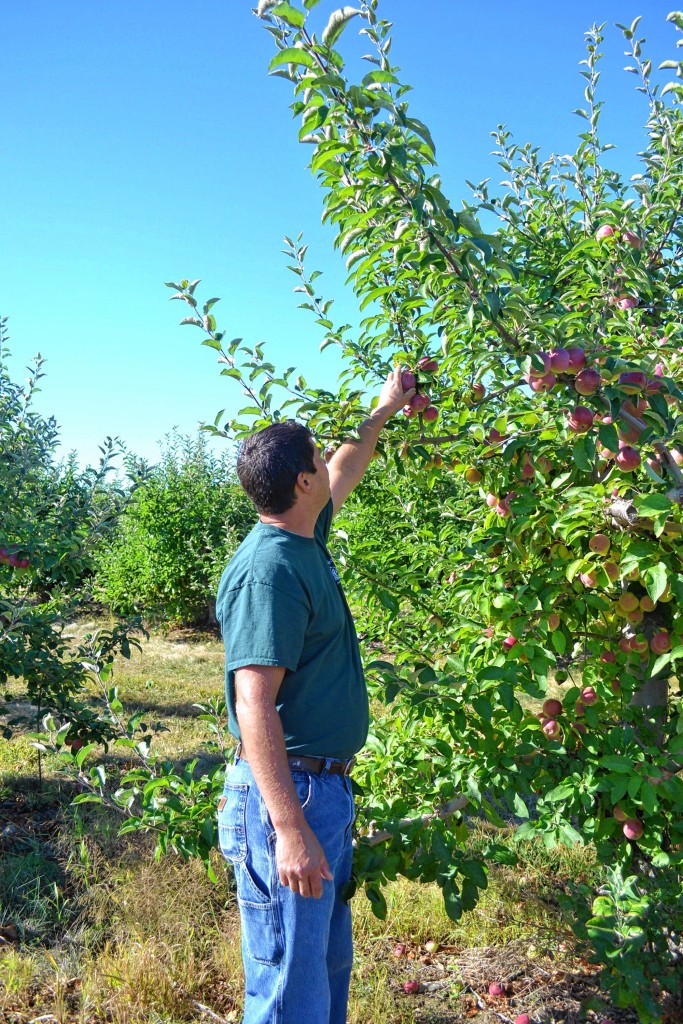It’s fall in New England, so you know what that means?
At some point or another, you’ll be wandering around an apple orchard with a little bag looking for the perfect apple. Or more appropriately, apples – because who goes apple picking for just one?
There’s nothing quite like apples right off the tree, so most people want to get as many as they can when the getting’s good. If you only eat an apple every once in a while, you can still store them, freeze them, can them or bake with them. It’s safe to say there’s lots you can do with fresh apples.
But picking apples off a tree isn’t the same as choosing from the bin at the store. Usually for us that means looking for the ones that don’t have any bruises on them from others picking them up and putting them back down.
More often than not, when you grab an apple off a tree at either Carter Hill Orchard or Apple Hill Farm (the two apple orchards within the Concord limits), you’ll be the first person to touch that apple. Now that’s what we call fresh.
So we figured, since you’re likely out there without a professional apple picking guide (if those even exist), we’d offer a few tips from the people who grow apples for a living.
Now one thing we need to get out there is that this year’s crop isn’t producing the same kind of large fruit that you saw a year ago. That is what was considered a super crop. Add in the lack of rain this year and that’s why the crop will be a little smaller after a super crop – which is just fun to say.
“Small apples are easier to eat,” said Diane Souther, owner of Apple Hill. “Size doesn’t matter as much as the variety.”
But don’t fret because there’s going to be apples to pick and delicious ones at that.
“There will still be plenty of them out there,” said Todd Larocque, manager of Carter Hill. “They’re just going to be a little smaller.”
As you probably know, apple varieties ripen at different times over the course of September and into early October (see page 20) , but right now we’re talking about McIntosh, Cortlands and Honey Crisps, with Macouns to follow.
It all depends on the variety, but McIntosh for instance you want to have a good portion of it red with a little green.
“You want 50 to 60 percent red,” Larocque said.
When you’re taking it off the tree, make sure you don’t take the leaves off with it.
“When you pick it with the leaves on it, you actually pick two apples – the one for this year and the one for next year,” Souther said.
So to get it off, grab it with your entire hand and either twist until it pops off or pull up to get it off. Those are tried and true approaches to get that perfect apple off, while allowing the tree to churn out more fruit next year.
“You don’t want to squeeze it,” Souther said. “You want to put your whole hand around it.”
And don’t climb the branches to get that one at the top. The trees are meant to hold apples, not you.
Of course, everyone knows you might sample an apple while you’re out there and that’s okay, just make sure to bring your core back with you. If you toss it under a tree, yellow jackets will mysteriously appear and that means more stings for everyone and no one wants that.
And we understand that everyone has a preference in their apple eating, but remember to obey the signs and only pick what you’re told is available. The apple growers know what they’re talking about. You just might have to go multiple times this year.
“You don’t want them all ready at the same time,” Larocque said. “So we try to mark the rows and point out where to go.”









